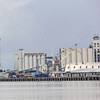DNV GL Launches PSC Planner App
Classification society DNV GL has launched a new application on its My DNV GL portal – the Port State Control (PSC) Planner. The PSC Planner has been designed to help ship owners, managers and operators increase their operational efficiency by giving them an overview of a vessel’s or fleet’s PSC performance and to benchmark that performance against the IACS classed world fleet. It also helps the crew on board by showing them particular areas to focus on when they are preparing for their next inspection.
“The rise of risk based port inspection regimes means it is more important than ever for ships to keep a clean PSC record,” says Claudia Ohlmeier, Group Leader Port State Control, DNV GL – Maritime. “With the PSC Planner shore side and on board personnel can see both the big picture and ship specific details. Crews can easily access the inspection results of their vessel and trends at their next port of call, which lets them ensure they are focusing on critical areas, while onshore staff can easily see where their fleet ranks and can identify and prioritise items or underperforming vessels for targeted improvements. Ultimately this is all about working toward the goal of having a safe ship, with a good reputation, that is complying with the rules effectively and efficiently.”
The PSC Planner provides information on a vessel’s last PSC inspection as well as a summary of the results of all PSC inspections over the last 36 months. It also gives an overview of the PSC performance of both fleets and individual vessels, as well as benchmarking against the IACS classed world fleet.
For vessels that are in DNV GL class or use other DNV GL services, the PSC Planner offers extra tailored data. It shows customers the NIR (New Inspection Regime) risk factors for the Paris, Tokyo, and Black Sea MoUs and their PSC inspection priorities. For individual vessels, customers can check the Ship Risk Factor associated with calling at a selected port and the top PSC inspection priorities in any port.
Customers can also check a list of the top deficiencies their ship has received in the main PSC code categories and a list of the top deficiencies that have been identified in a selected port, in general and for the same ship type. The PSC Planner can also create a bespoke checklist for customers with the top ten focus items based on the ship and port so they can prepare optimally for individual vessel inspections, saving valuable time and effort.












